PNNL @ ACS Fall 2022
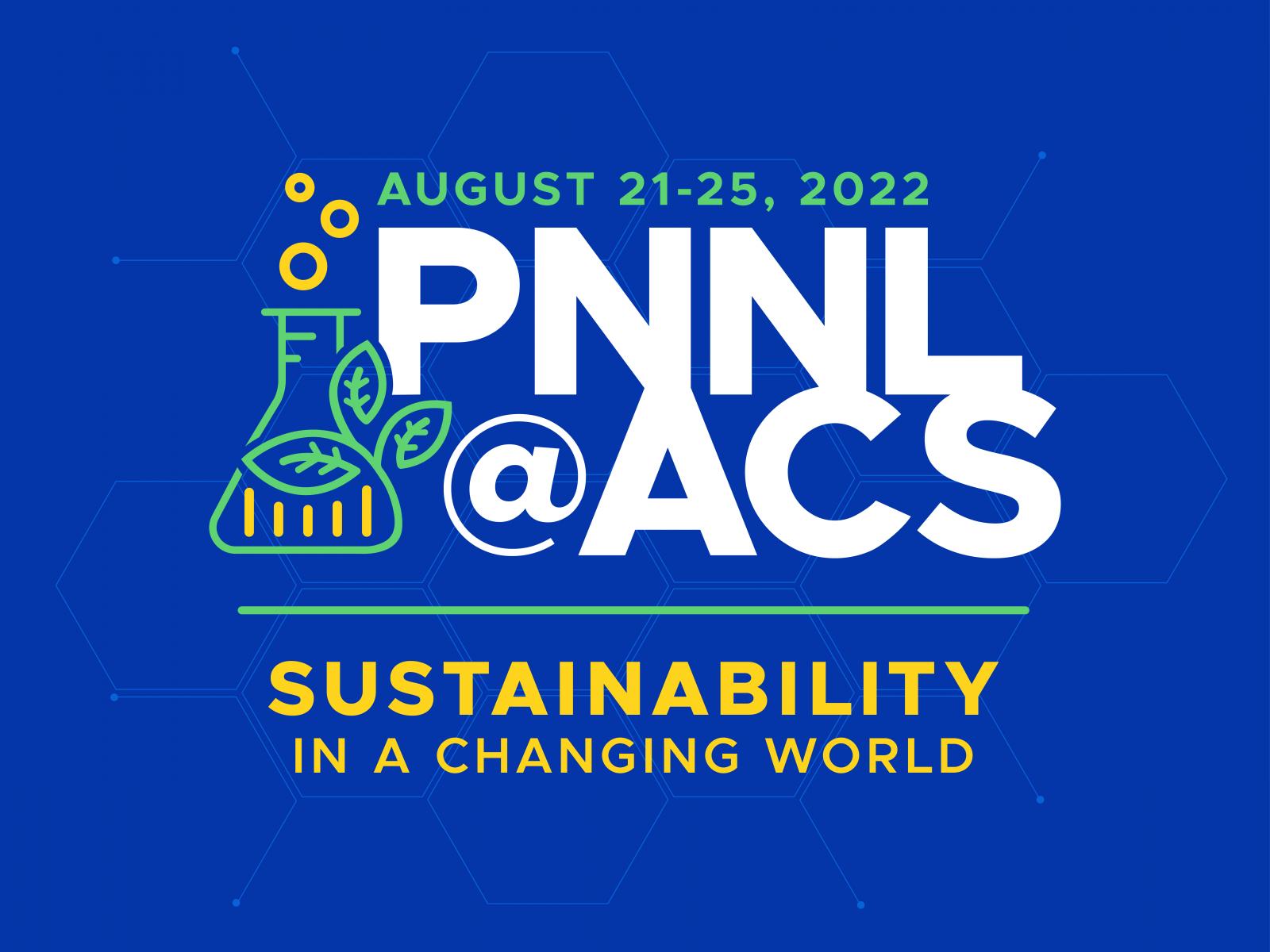
Pacific Northwest National Laboratory (PNNL) chemists will once again be in full force at ACS Fall 2022. Over 60 speaking sessions will be led by PNNL scientists and engineers across a wide range of topics, including breakthroughs in catalysis, battery technologies, carbon capture, plastics, alternative fuels, and other advancements in chemistry and chemical engineering.
Below are a few key sessions we invite you to attend. A complete list of PNNL-led sessions can be found on the ACS Fall 2022 event website.
If you’re interested in working at PNNL, we encourage you to ask any of our researchers at ACS Fall about what it’s like working at PNNL.
Sunday | Monday | Tuesday | Wednesday | Recent News
Sunday, August 21
Careers at a national laboratory: Through the lens of a postdoctoral researcher
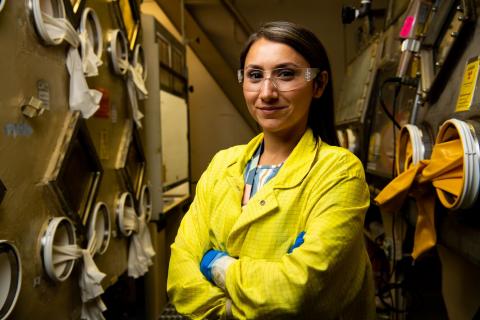
Presenter: Ana Arteaga
Time/Location: 9:05 a.m. CST, W192b
Summary:
Careers at a national laboratory, such as Pacific Northwest National Laboratory, are accompanied by unique opportunities to conduct groundbreaking and innovative research as well as opportunities to diversify one’s scientific and leadership abilities. This can include opportunities like working on diverse project teams and/or leading one’s own project by applying for internal funding such as the Linus Pauling Distinguished Postdoctoral Fellowship. In addition, national laboratories are one of the few facilities equipped for the handling and characterization of highly radioactive transuranic elements, such as plutonium and americium. This enables us to work on both fundamental and applied actinide chemistry research. The focus of this talk will be career development and the pathway to transition from a Ph.D. student to a Pauling Postdoctoral Fellow. In addition, preliminary results from my Pauling postdoctoral work will be presented on the intersection of solution and solid-state actinide oxide nanocluster chemistry.
Role of alcohols (C1-C4) in sustainable aviation fuel
Presenter: Asanga Padmaperuma
PNNL Co-authors: Karthikeyan Ramasamy, Mond Guo, Udishnu Sanyal
Time/Location: 10:00 a.m. CST, W185bc
Summary:
The aviation sector is responsible for 3% of the greenhouse gas emissions and is considered to be one of the sectors most difficult to decarbonize. For medium and long-distance flights, liquid fuel is the only viable candidate for the foreseeable future. This necessitates the identification of renewable feedstocks and pathways to produce sustainable aviation fuels. It is already proven at the commercial stage that alcohols such as methanol, ethanol, and butanol can be produced from renewable feedstocks (e.g., municipal solid waste, residual biomass). In this presentation, we will discuss the status and the opportunities to convert these renewable alcohols into sustainable aviation fuels.
Fundamental actinide science: An Avenue to Foster Research and Career Development
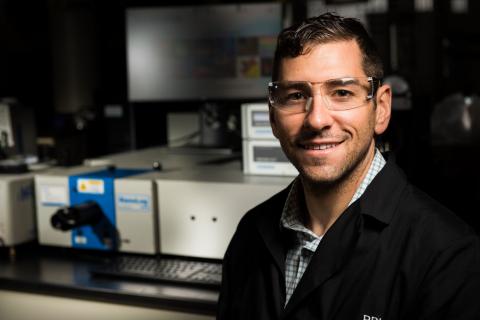
Presenter: Robert Surbella
Time/Location: 10:05 a.m. CST, W192b
Summary:
This presentation will provide a brief overview of several nuclear-related project areas and highlight instances where the scope of work intersects both fundamental and practical applications. A specific focus on lanthanide and actinide containing metal-organic frameworks (MOFs) will be covered and framed within the context of the expanding heavy element chemistry program at PNNL. Research relevant to lanthanide containing frameworks and actinide sequestration will be discussed while the utility of MOFs to function as a construct for probing actinide bonding and photophysical properties will be introduced. Vehicles designed to support student opportunities at PNNL will be highlighted along the way.
Highly conductive sulfide solid-state electrolytes for all-solid-state li battery
Presenter: Zhaoxin Yu
PNNL Co-authors: Kiseuk Ann, Daniel Marty, Dongping Lu
Time/Location: 11:05 a.m., W184bc
Summary:
All-solid-state lithium batteries (ASSLBs) are pursued intensively as a promising next-generation energy storage technology due to their high potential to achieve superior safety and high energy/power densities. Sulfide-based solid-state electrolytes (SSEs) have merits of low density, high ionic conductivity, and favorable mechanical properties compared with oxide ceramic and polymer materials. However, large-scale production and processing of sulfide SSEs and their application in Li batteries remain a grand challenge due to their poor moisture stability and chemical/electrochemical compatibility with Li metal. Here we report a novel strategy to enhance moisture stability of sulfide SSEs: reversible surface coating with amphipathic organic molecules.
Beyond Li-ion batteries for grid energy storage

Presenter: Xiaolin Li
PNNL Co-authors: Fredrick Omenya, Matthew Fayette, Hee Jung Chang, David Reed
Time/Location: 3:50 p.m. CST, W185a
Summary:
Li-ion batteries dominate the market of electric vehicles. However, they face significant challenges from costs, material sustainability, and safety when used for grid energy storage. Sodium-ion batteries and aqueous zinc batteries are promising alternative beyond Li-ion battery technologies for their abundant global reservation, stable material supply chain, or high safety. Here, we will present our recent progress on the development of Na-ion and aqueous Zn batteries at Pacific Northwest National Laboratory.
Understanding Particle-Based Crystallization Pathways Via Using Advanced Transmission Electron Microscopy Techniques
Presenter: Xin Zhang
Time/Location: 3:55 p.m. CST, Regency B
Summary:
Many crystallization processes occurring in nature produce highly ordered hierarchical architectures. Their formation often cannot be explained using classical models of monomer-by-monomer growth. One of the possible pathways involves crystallization through the attachment of oriented nanocrystals. To gain detailed understanding of the mechanism of particle dynamics that leads to their precise crystallographic alignment along specific faces a combination of scanning/transmission electron microscopy (S/TEM), atomic force microscopy (AFM), and computational methods has been employed.
Monday, August 22
Dissolution chemistry of boehmite and gibbsite under conditions relevant to high-level tank waste

Presenter: Zheming Wang
PNNL Co-authors: Xin Zhang, Wenwen Cui, Ping Chen, Carolyn Pearce, Kevin Rosso
Time/Location: 8:00 a.m. CST, Regency B
Summary:
Gibbsite and boehmite are not only important precursor minerals for aluminum and aluminum oxide, broadly used in many industrial areas, they are also the primary non-radioactive constituents of the high-level waste sludge at various former nuclear material production sites. For the latter, the dissolution characteristics of these aluminum mineral phases will significantly affect the reprocessing strategies and economies. In this work, nanoparticulate gibbsite and boehmite were synthesized by the hydrothermal method, and resulting solids were treated with i) metal ion (Cr3+, Eu3+, and UO22+) adsorption; ii) organic acid (oxalic acid and acetic acid) adsorption; and iii) 60Co γ-irradiation. The treated solids are then subjected to dissolution in highly basic NaOH solution at 80 °C. While the solid dissolution was quantified by the aqueous Al(III) concentrations, the particle morphology, structure and interfacial chemistry were analyzed by an array of microscopy and spectroscopy techniques. Scanning electron imaging and X-ray diffraction analysis show negligible changes on boehmite upon metal ion or organic adsorption, or by γ-irradiation. Temperature-dependent dissolution rates of pure versus Cr(III)-adsorbed boehmite showed that the initial rate for the latter is consistently several times lower. Solid characterization reveal a phyicochemical armoring effect by adsorbed Cr(III) that substantially reduces the number of dissolution-active sites on particle surfaces. Similarly, organic acid-adsorption also reduced boehmite dissolution, likely due to blocking of dissolution-active sites. However, their effects were much less pronounced compared with that of metal ion (Cr) adsorption. We also found that 60Co γ-irradiation generally enhanced boehmite dissolution while the extent of the effect was also dependent on the presence of electrolytes, such as nitrate anion.
Below $40/tonne CO2 Point-Source Carbon Capture with 2-EEMPA, a Leading Water-Lean CO2BOL Solvent
Presenter: David Heldebrant
PNNL Co-Authors: Yuan Jiang, Richard Zheng, Dushyant Barpaga, Phillip Koech, Deepika Malhotra, Charles Freeman
Time/Location: 8:05 a.m. CST, W175a
Summary:
We present here the testing and TechnoEconomic Assessment (TEA) modeling of leading CO2BOL diamine, N-(2-ethoxyethyl)-3-morpholinopropan-1-amine (EEMPA) for post-combustion CO2 capture. In previous studies, we showed that EEMPA has the potential to be 19% more efficient and cheaper than the U.S. Department of Energy’s National Energy Technology Laboratory’s (NETL) Cost and Performance baseline (REV 3) Case B12B with cost projections in 2011 U.S. dollars. Here, we present an updated technoeconomic study and sensitivity analysis of EEMPA, using NETL’s REV4 Case B12B baseline.
Highly efficient and selective polyolefin upcycling by hydrogenolysis over disordered, sub-nanometer Ru structures on CeO

Presenter: Linxiao Chen
PNNL Co-authors: Laura Meyer, Libor Kovarik, Xavier Pereira-Hernandez, Honghong Shi, Oliver Gutierrez, Janos SzanyiTime/Location: 9:40 a.m. CST, W187a
Summary:
Plastics play irreplaceable roles in a wide range of industries and are produced on a large scale. Nonetheless, the low recycle rate and resistance towards degradation of the plastic waste pose severe threats to the environment. Therefore, technologies that effectively upcycle plastics into small, valuable hydrocarbons are in urgent demand. One viable strategy is metal-catalyzed hydrogenolysis, for which Ru/CeO2 is known as one of the most effective catalyst compositions. In this work, we discovered that low-loading (≤ 0.25 wt%) Ru/CeO2 exhibits remarkable catalytic performance in the hydrogenolysis of polypropylene (PP), polyethylene (PE), and a model alkane n-C16H34, which is significantly superior to high-loading (≥ 0.5 wt%) Ru/CeO2. (Read a PNNL news release about this research.)
Insights into the mechanism of the A-cluster in the CODH/ACS enzyme from first principles calculations
Presenter: Conrad Johnston
PNNL Co-authors: Bojana Ginovska, Simone Raugei
Time/Location: 10:50 a.m. CST, W178a
Summary:
Carbon monoxide dehydrogenase/acetyl-CoA synthase (CODH/ACS) is a bi-functional enzyme of particular interest for enzymatic energy conversion, due to its ability to convert CO2 to acetyl quickly, selectively, and at the thermodynamic redox equilibrium, outperforming all proposed synthetic mimics. In the CODH/ACS complex, there are two types of active clusters, connected by a network of tunnels and alcoves that transport substrates internally. In this study, we focus on the A-cluster, a four-iron, four-sulfur cluster bridged to a di-nickel motif, located in the ACS sub-units, which is responsible for converting CO to acetyl. An exact mechanistic understanding of the processes occurring at the A-cluster has remained elusive. Using density functional theory calculations on extended cluster models, and quantum mechanics/molecular mechanics (QM/MM) methods to address the role of the extended protein environment, we investigated the electronic and structural features of the A-cluster and its ligands.
Intramolecular isotope analysis for deducing synthesis parameters and identifying precursor stocks in chemical weapons agent (CWA) production
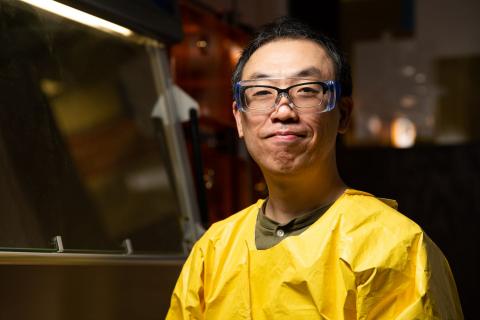
PNNL Co-authors: Kai-For Mo, William Kew, Nicole Didonato, Carlos Fraga
Time/Location: 10:55 a.m. CST, Grand Horizon C
Summary:
Stable isotope analysis is a well-established technique for supporting chemical forensic attribution efforts. Yet, traditional stable isotope analysis is limited to making average measurements over an entire molecular structure. While this can provide extremely useful information, the potential for elucidating the distribution of different isotopes within a molecular structure would offer improved resolution for connecting specific batches of reagents with synthesized chemical weapon agents (CWAs) and for potentially deducing synthetic parameters and pathways used during synthesis. Such information would provide an additional fingerprinting tool largely not accessible to current chemical forensic efforts. Recent advancements in Orbitrap and Fourier transform ion cyclotron (FTICR) mass spectrometry have drastically improved mass resolution for analysis of organic molecules. We are undertaking fundamental evaluation of these instrumentations to assess the feasibility of leveraging their high mass resolution for stable isotope evaluation of CWAs and to discern intramolecular isotope distributions that may correlate to the distinct isotope content of synthetic precursors.
Catalytic pathways for converting oxygenates in an aqueous environment
Presenter: Johannes Lercher
Time/Location: 11:05 a.m. CST, W184bc
Summary:
Striving for a carbon neutral energy future requires the ability to use organic waste, consisting largely of oxygenates, as resource for hydrogen storage and backward compatible hydrocarbon energy carriers. The organic complexity of the required chemical transitions demands fundamental understanding of the mutual influence between reactive environment and catalysts to develop robust processes. The lecture will address the challenges and emerging insight of the metal and acid-base components of the catalytic strategies. At the core of the presentation will be the analysis of the emerging and dynamic interface between solid (oxide and metal) catalysts and the impact on the reacting molecules.
Tuesday, August 23
Catalytic upgrading of furfural to bio-diesel and bio-jet via pentene oligomerization and fuel properties measurements
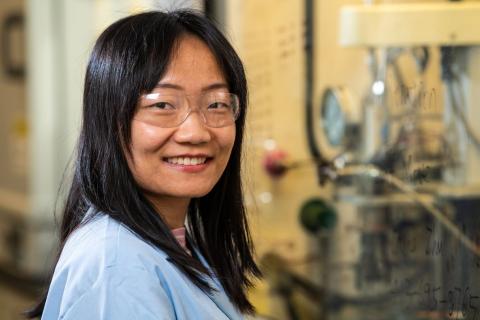
Presenter: Cheng Zhu
PNNL Co-authors: Vanessa Dagle, Johnny Saavedra, Martin Affandy
Time/Location: 11:10 a.m. CST, W185bc
Summary:
Furfural has been of particular interest as a precursor for the production of renewable hydrocarbon fuels since it can be produced from biomass conversion to C5 sugars. Here, we developed and demonstrated each step of a process for production of bio-diesel or bio-jet from furfural. In this process, furfural is first converted into 2-pentanol which is then dehydrated into pentenes. This is followed by pentenes oligomerization and hydrogenation into either diesel range or jet fuel range hydrocarbons.
Solvation structures and thermal decomposition of electrolytes on novel divalent cathode MgV2O4 by in situ MAS NMR and computational modeling
Presenter: Jian Hu
PNNL Co-authors: Wenda Hu, Dan Thein Nguyen, Venkateshkumar Prabhakaran, Kee Sung Han, Vijayakumar Murugesan, Karl Mueller
Time/Location: 5:30 p.m. CST, Virtual-only
Summary:
Theoretically, Mg batteries can reach high energy density with cost-effective materials, but no such device to date has performance competitive with Li-ion technologies. One of the major barriers is the need for oxide cathodes that combine high capacity and voltage. Nanocrystals of MgV2O4 have been demonstrated to have the potential to reach high capacity for Mg2+ deintercalation, but the electrochemical cycling performance is quite limited primarily due to the decomposition of electrolytes on the surface of MgV2O4. To gain insight into the active sites that catalyze the electrolyte decomposition, in this study we used a combination of in situ MAS NMR, XPS, and computational modeling to study electrolyte (Mg(TFSI)2 in diglyme (G2)) decomposition by nanocrystal sized MgV2O4 powers.
Wednesday, August 24
Probing interfacial phenomena with DNP-NMR
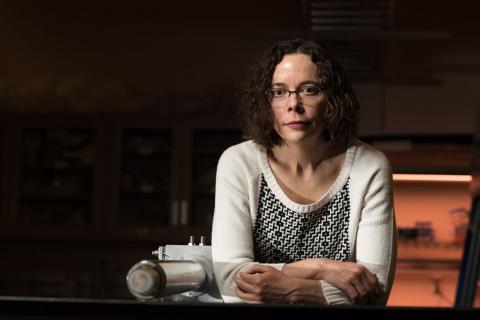
Presenter: Nancy Washton
PNNL Co-authors: Jonathan Bazak
Time/Location: 2:30 p.m. CST, W184a
Summary:
Magnetic resonance capabilities, including nuclear magnetic resonance (NMR) and electron paramagnetic resonance (EPR), provide non-destructive evaluation of local structure and bonding through isotopically-specific probing of electromagnetic environments and couplings. This presentation will highlight recent advances in resolution and sensitivity enhancement using high magnetic field (20.1 T) and dynamic nuclear polarization (DNP) that have pushed forward studies of new materials used for components of energy storage systems. Extensions to new studies of advanced energy storage materials, including mono- and multi-valent systems, will be discussed.
Understanding selective surface induced reactivity of electroactive ions at Mg electrodes
Presenter: Venky Prabhakaran
PNNL Co-authors: Vaithiyalingam Shutthanandan, Grant Johnson, Jian Zhi Hu, Karl Mueller, Vijayakumar Murugesan
Time/Location: 3:30 p.m. CST, W184a
Summary:
Chemical transformations of electrolyte constituents, such as solvent and solvated electroactive ions, at the Mg-metal electrode determine the evolution of the solid-electrolyte interphase (SEI) and define the performance of Mg batteries. The ability to determine the fundamental chemistry occurring at electrode-electrolyte interfaces (EEIs) during charge transfer processes as a function of both electric field strength and concentration gradient is necessary to enable the rational design of more efficient and robust electrochemical technologies for energy storage. The scientific challenge is to predict and delineate myriad of interfacial interactions (i.e., adsorption, coordination, reactivity and transport) and control reaction pathways that lead to formation of desired products over unwanted byproducts that can result in decreasing battery performance. Soft landing of mass-selected ions, a versatile approach to surface modification, is ideally suited to preparation of well-defined interfaces with predetermined electrochemically active ions.
Cr(III) Adsorption Mechanisms at the Nanoscale and the Effect on Boehmite Dissolution in Highly Alkaline Solutions
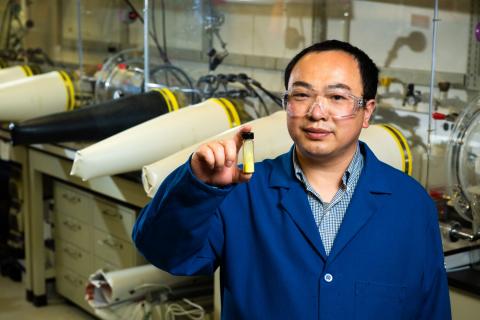
Presenter: Xin Zhang
PNNL Co-authors: Wenwen Cui, Zheming Wang, Carolyn Pearce, Kevin Rosso
Time/Location: 4:20 p.m. CST, Great Lakes B
Summary:
Boehmite (γ-AlOOH) is an important aluminum oxyhydroxide in nature that also plays diverse roles across a plethora of industrial applications. It comprises a major portion of the solid fraction in nuclear waste stored at the Department of Energy (DOE) Hanford Site, where it exists in contact with highly caustic sodium hydroxide solutions and sludges. Tests have showed that the surface area-normalized dissolution rate of boehmite nanomaterials in the tank waste sludge is at least an order of magnitude lower than that predicted for those conditions, ostensibly attributed to the role of various possible doped trace metals.